Thailand–Burma Railway Centre
The Thailand-Burma Railway Centre is mainly the work of one visionary and Death Railway researcher/historian: an Australian called Rod Beattie, who had been surveying the rail line and history of its construction for a considerable amount of time before finally opening this new museum and research centre in 2003. It’s state-of-the-art.
The quality and accuracy in the display of facts and exhibits is markedly better than in the other two Death Railway related museums in Kanchanaburi. It’s also the most comprehensive exhibition on the topic anywhere in the world, surpassing the Hellfire Pass Museum, although that has the added bonus of being at an authentic site of the former railway line.
Incidentally, however, it was also Rod Beattie who cut through and surveyed that stretch of the former railway line, which had become completely overgrown. In that sense both the Railway Centre and the Hellfire Pass memorial site are related. Together they form the best you can get as a dark tourist on the trail of the Death Railway.
Note that the Centre is not only a museum but also a research centre, holding, e.g. rare out-of-print books written by survivors. Its resources are also incredibly valuable to all those who had relatives who were involved in the Death Railway‘s story and who are seeking information. The Centre even organizes research field trips along stretches of the former railway that are less developed for tourism (as is e.g. Hellfire Pass).
What there is to see: a modern, state-of-the-art, multimedia-supported, and highly informative exhibition. Well worth taking it in to the full.
The organization of the exhibition follows a more or less chronological course, from the prehistory of Japanese expansion in the Pacific and its invasion of Burma all the way to the aftermath of the war, the repatriation of surviving POWs and reburial of the dead.
Apart from photos and text panels, there’s a plethora of original artefacts, many salvaged from along the train line, together with replicas and models, e.g. of a trestle bridge, and (partly interactive) dioramas of the railway line route and of a POW camp. The technical difficulties are illustrated as well as the hardships endured by the POWs. A side room houses a life-size reconstruction of a camp hospital, with dummies, while illustrative and informative material on the wall details the gruesome medical conditions faced by the POWs.
There’s also a video about the railway that is on show in a constant loop in a small video theatre.
The Centre also covers the fact that while the Western POWs sure had it bad, the conscripted Asian workers were treated even worse by the Japanese and their death toll was significantly higher. Whereas some other museums of this kind tend to concentrate only on the POWs, e.g. the JEATH museum, where this is even reflected in its name!
Particularly touching are the little things, little artefacts made by the prisoners, drawings of the natural beauty they found themselves surrounded by – despite the atrocious living conditions – and other evidence of the spirit of those who survived. As it said somewhere (in the video I think): it’s no mean feat to have survived this hell, and good grounds for some pride.
The exhibition continues on the second floor, where the main exhibit is a model of one of the cuttings hacked out of the rock by the railway workers (see Hellfire Pass). This is followed by a section about the completed railway in use and the air attacks on it by the Allies towards the end of WWII.
The final section is about the search for graves along the railway line (the dead were reburied in the war cemeteries such as those in and near Kanchanaburi), the stories of ex-POWs returning home and the fate of the railway after the war.
Outside the exhibition proper there is also a cafeteria and shop – the latter has a lot of very tempting materials, from simple postcards to books. The one that covers the museum’s contents best is the A5 format 80-page brochure called simply “The Death Railway – A Brief History” by the museum curator and Death Railway expert Rod Beattie. This also includes some interesting colour photographs of some former railway line sites today. There’s also a larger A4 format brochure of 60 pages with more photos (black & white only), but quite a bit of overlap. It’s difficult to say which of the two is the better. But one of them would make the perfect memento to take home (more so than the DVD “Spirit of the Railway”, which, though it also contains interesting footage, is more focused on individual memories, primarily of Australian ex-POWs – so it’s more specialist material).
From the windows of the cafeteria/shop you can also get a good view of the Kanchanaburi War Cemetery stretching out in front of the building.
All in all, the Centre is a truly smashing dark tourism site in Thailand, one of its very best. If you’re pressed for time when travelling in these parts make it a priority.
Location: immediately to the north-west of the centre of Kanchanaburi, western Thailand, 80 miles (130 km) from Bangkok. The museum is directly by the northern side of the Kanchanaburi War Cemetery, less than 200 yards south from the main train station – as opposed to the one by the Bridge over the River Kwai, which is a bit under 2 miles (3 km) away.
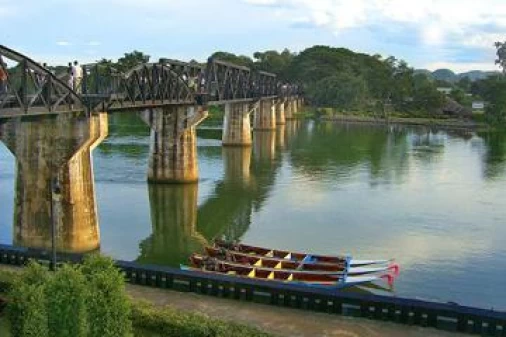
Bridge Over the River Kwai (Kanchanaburi)
Kanchanaburi, in Myanmar border, is home to the famous Bridge River Kwai. During WW II, Japan constructed...
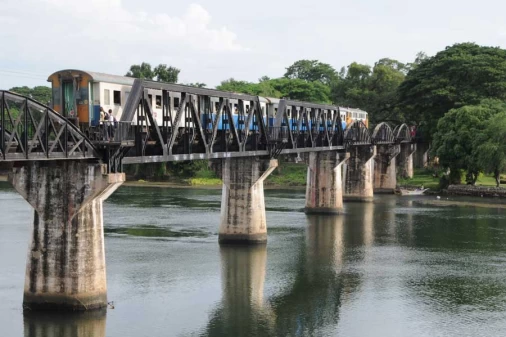
Death Railway Bridge
Descriptions: This 300m-long bridge is heavy with the history of the Thailand–Burma Railway, the construction...
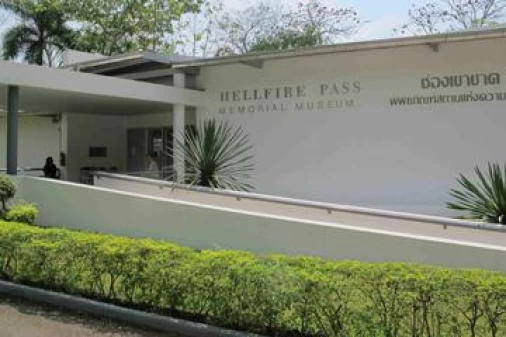
Hellfire Pass Museum (Kanchanaburi)
This Australian built complex consists of a memorial site located within Konyu Cutting (Hellfire Pass),...
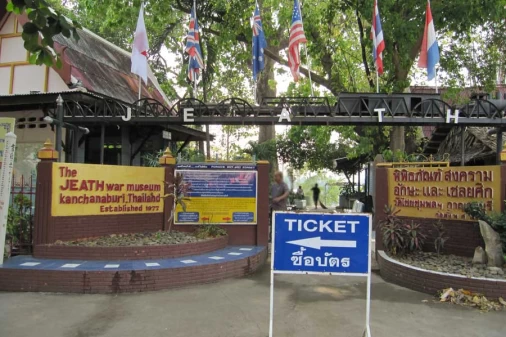
JEATH War Museum
Descriptions: Pieced together in 1977 by the abbot of Wat Chaichumpon, the JEATH War Museum was among...
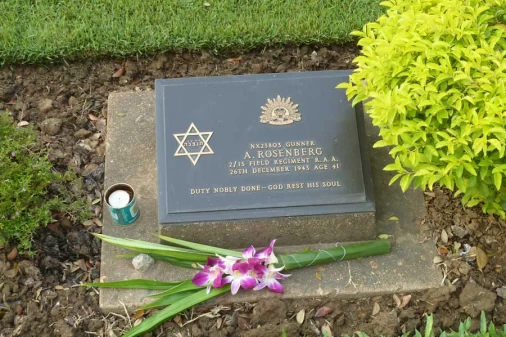
Kanchanaburi War Cemetery
Descriptions: The town of Kanchanaburi is 129 kilometres North-West of Bangkok and is best reached by...
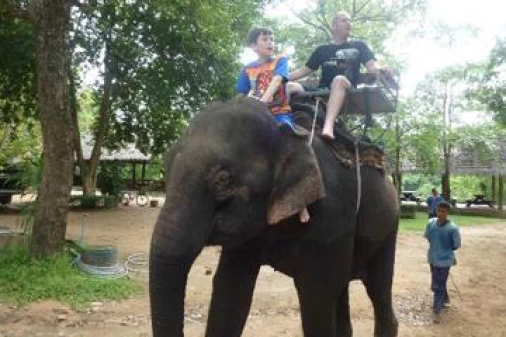
Taweechai Elephant Camp (Kanchanaburi)
Taweechai Elephant Camp is one of the largest elephant camps in Thailand. In operations since 1999,...
 France
France  Spain
Spain  German
German  Italian
Italian 

 Vietnam Tours
Vietnam Tours  Cambodia Tours
Cambodia Tours  Myanmar tours
Myanmar tours  Thailand Tours
Thailand Tours  Laos Tours
Laos Tours